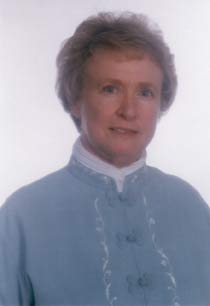Interview with Barbara Hodson, Ph.D., Wichita State University, Wichita, KS
Share:
Linda Schreiber: Today I am interviewing Barbara Hodson, the author of the Hodson Computerized Analysis of Phonological Patterns. The focus of our interview today is on learning more about this time-saving software, but Barbara, you are the author of numerous other products in the area of phonology.

Linda Schreiber: Today I am interviewing Barbara Hodson, the author of the Hodson Computerized Analysis of Phonological Patterns. The focus of our interview today is on learning more about this time-saving software, but Barbara, you are the author of numerous other products in the area of phonology. And that includes chapters in books, articles, assessment instruments, and textbooks like Evaluating and Enhancing Children's Phonological Systems. Have you always been passionate about phonology?
Barbara: When I was working on my PhD at the University of Illinois in the early 1970s, I became aware that even though research in the area of child language was having a dramatic impact on clinical applications, not much seemed to be changing in the area of clinical phonology. The more I delved into phonology, the more I loved it. In the late 1970s and early 1980s, there was a flurry of activity among phonology professors, including several assessment tools, but these, including my 1980 phonology test, were too complicated for most front-line practitioners.
Linda: I remember that era well. How did phonology move to the forefront of our profession?
Barbara: I don't think phonology has yet arrived at the forefront, but interest in phonology certainly has increased. In the mid 1980s, assessment tools like the Assessment of Phonological Processes-Revised (APP-R), which was more user-friendly than the 1980 version, and companion software became available. A revision of the APP-Rthe Hodson Assessment of Phonological Patterns-3rd edition (HAPP-3) was released in 2004and prior to that, in 2003, the Hodson Computerized Analysis of Phonological Patterns-3rd edition (HCAPP) became available.
Linda: How did the 2004 HAPP-3 differ from the 1986 APP-R?
Barbara: In addition to being easier to administer, the HAPP-3 is norm-referenced as well as criterion-referenced, and several words were changed to accommodate international uses. In addition, the analysis forms are more user-friendly.
Linda: So in addition to these assessment tools, in 2003 you published the Hodson Computerized Analysis of Phonological Patternsalso known as HCAPP. What is HCAPP and how does it fit in with the other phonological assessments?
Barbara: HCAPP is a software program that helps speech-language pathologists analyze children's disordered phonological systems. Once the productions of the 50 HAPP-3 words have been elicited, transcribed, and verified, they can be entered into the HCAPP software.
Linda: It's that easy? Does HCAPP write the report too?
Barbara: Not quite. HCAPP does provide a Phonological Analysis Summary which includes:
- Total Occurrences of Major Phonological Deviations, which yields a Severity Rating (mild, moderate, severe, profound) of the child's phonological system
- Percentage-of-Occurrence scores for Major Phonological Deviations
- A Consonant Category Deficiencies sum that can be used for comparison with normative data provided in the HAPP-3 manual for eligibility purposes, and
- A Goal Statement that lists potential optimal target patterns
Barbara: Yes, but, of course, each child's treatment plan must be individualized for that child.
Linda: I understand that the child's data can be saved. So could HCAPP data also be used to monitor the child's progress over time?
Barbara: Clinicians report that they really like using the TOMPD and the Phonological Deviation Percentage-of-Occurrence scores for documenting a child's progress following treatment for evidence-based practice.
Linda: How much time does the analysis take with HCAPP?
Barbara: It takes about 5 minutes to enter the child's productions (depending on your typing speed and the severity level of the child). The list of targets is provided, and the phonetic symbols are also available for entering the transcription; the analysis itself takes just seconds.


Linda: Does the SLP need to also do the analysis using the HAPP-3?
Barbara: I really prefer that practitioners first do a phonological analysis using the HAPP-3. It is more comprehensive and it will help the practitioner understand the scores and interpret the analysis of HCAPP. Analysis using the HAPP-3 does take longer, especially the first time an individual uses it. After that, the HAPP-3 analysis can usually be completed in 15-20 minutes. With the HCAPP software, however, the input and analysis are usually done in less than 5 minutes.
Linda: That's quite a time-savings. I know our readers are all in favor of saving time in diagnostic analyses and report writing. Is the software compatible for Mac or Windows?
Barbara: It is compatible for both operating systems. It's a hybrid that works on both platforms.
Linda: Where can our reader get more information about HCAPP?
Barbara: They can visit PhonoComp Software website at www.hodsoncapp.com/
Or they can email PhonoComp@cox.net
Linda: Barbara, thank you for your interview. And on behalf of our readers, thank so much for creating this time-saving software and for all that you do for our profession!
